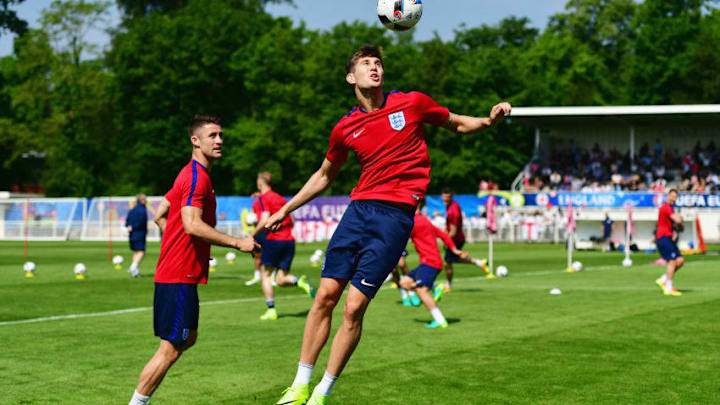For a fee of £47.5 million, John Stones finally makes the move from Everton to Manchester City. His promise makes it worth it.
It cost nearly £50 million, but years down the line, the decision to bring John Stones to the Etihad might prove invaluable. In Stones, City swells its defensive ranks and possibly could have found the long-term successor to backline pillar Vincent Kompany. If Stones grows to fill such shoes, then this pricey move pays for itself and then some.
More from Man City News
- Rodri believes City can have even more success this season
- Grealish, Stones, and Kovacic will NOT play tomorrow
- After Injury Guardiola is back in Etihad
- Humble Haaland Maintains Low Profile Leading Up to Ballon d’Or 2023
- Khadija Shaw and Erling Haaland nominated for NWF’s player of the season
I’ve admittedly been skeptical of Pep Guardiola’s vast spending. Large chunks of cash have flowed out of City’s front office — approximately over £150 million now with Stones. A significant amount of it was thrown at teenage prodigies, for many of whom it’s unclear whether they will continue to be considered that prodigious when they’re no longer teenagers. Not only that, many of these youngsters, who mostly double as forwards and wingers, will not contribute in the first team for some time. So, Guardiola’s accumulated a false depth of talented attacking players in the same relative positions, some of whom can’t be deployed immediately and will fight among themselves and other established players for minutes when they finally are available, negating each others’ impact.
Next: City Transfer Watch: Sold to La Liga
On the other hand, Stones has a chance to compete for first team time and contribute right away. Elaquim Mangala is reportedly headed out the exit door. Nicolás Otamendi thus far has proven himself to be a bit of bonehead in his play. Fernando and Aleksandar Kolarov made fairly strong arguments in the friendly against Arsenal as to why they shouldn’t be center halves. There’s always a question mark about captain Vincent Kompany’s fitness. It is plausible Stones could play in the opener against Sunderland and or the following midweek fixture against Steaua Bucharest.
Now, this isn’t to say Stones is a sure thing or that he has no weaknesses. His appeal for Guardiola lies in his passing ability. It’s the tackling, marking, clearing — defending itself — that raises a few eyebrows about £50 milllion-rated Stones. So there’s room for improvement with him that would accompany tolerating growing pains. This might be the price that needs to be paid for the development of City’s Gerard Pique, as nurtured under the tutelage of Guardiola.
I say that price is indeed worth paying. At 22, Stones is young but has already more than a year of Premier League experience. He’s far from his technical and mental peak and already a fully-fledged English international. Granted, his flaws were exposed in a weak Everton defense in flux last season, and he’ll be a part of another backline that faces uncertainty. Yet, given there’s no clear-cut superior option to him currently on City’s bench, there’s little reason why he shouldn’t take the pitch with the 10 other starters. Oh, and there’s that x-factor of Guardiola serving as a mentor. As time goes on and he further implements his tactical system, Stones could serve as a cornerstone from which to build both the defense and starting XI, growing both the player and the team together into Tiki-taka nirvana.
Also in the Englishman’s favor is that young defenders aren’t as marquee as attacking players. There will be other glittering new wingers and strikers next January and summer that will attract all the big player clubs. While touted offensive talents are always just around the corner, defensive studs aren’t so common. This difference in value tends to be manifested inversely from the laws of supply and demand in how clubs often price these players — attackers have higher price tags than defenders.
Thus, Stones’ stock is more stable than Marlos Moreno’s, Kelechi Iheanacho’s, Gabriel Jesus’ and even Leroy Sané’s. Twelve months from now, the pundits, the fans, media likely will all not be so high on these players or the crop of transfers of which they were a part. In around 18 months, I fully expect one of these players to move from City or will be on the way out, if not already there, in part because of some other impulse buy City makes on the attacking side of the ball. On the contrary, barring some unlikely flop of catastrophic proportions, the £50 million expended for Stones and the lack of supply in central defenders in Europe suggests City and Guardiola are committed to developing him now as the centerpiece of their defense for the better part of a decade.
As Stones offer both benefits in both the present and future for City, his purchase is what I call a tempered, reasonable investment.
